And the GMO labeling debate continues. You’ve probably seen news about GMO labeling laws popping up in the media quite a bit lately, it’s a super hot topic for good reason, and for once it’s not all bad news. In fact, I’m happy to say that we may finally be moving in a positive direction.
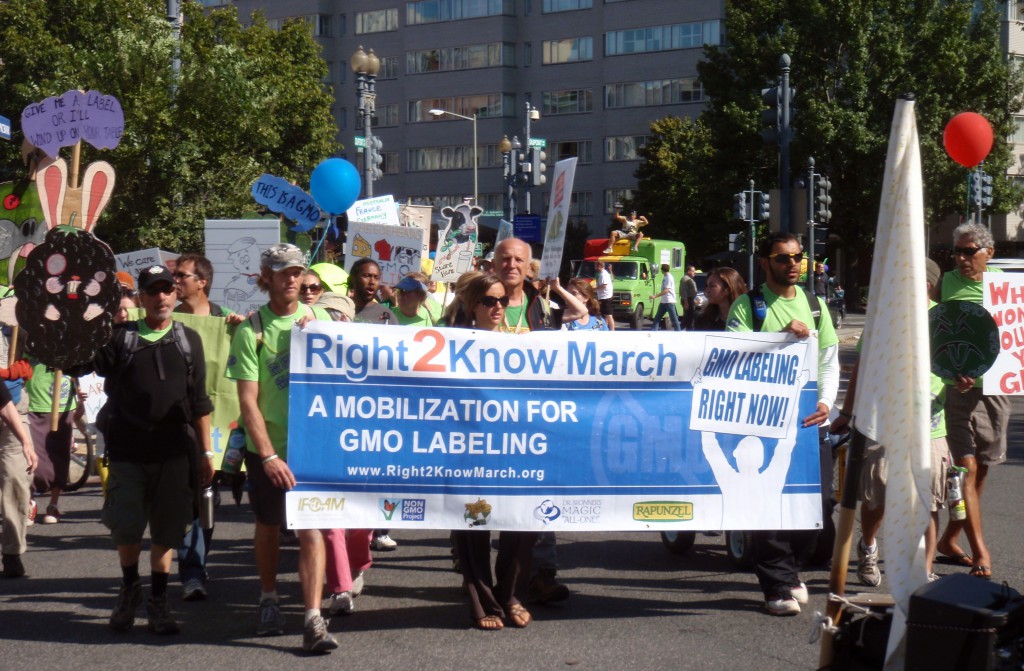
Earlier this month the Senate made the decision to stop the DARK Act (Deny Americans the Right to Know Act), which would have prohibited states from requiring GMO labeling – resulting in a victory for transparency and consumer empowerment. The state of Vermont has already passed a mandatory labeling law set to take effect July 1.
And last week was a huge week, with four major food companies including Kellogg’s, General Mills, ConAgra Foods, and Mars Inc. announcing they will label foods containing GMOs. This is in addition to Campbell’s, who agreed to the same back in January.
Why is This Such a Big Thing?
For years, health crusaders, food advocates, and consumers in the U.S. and Canada have been going to bat against the mass food market in favor of, at the very least, clear labeling of GMOs on food products – to banning the use of GMOs entirely – not a far cry from over 60 countries, including the entire European Union, that have either significant restrictions, or bans on the production and sale of GMOs.
And year after year, major food and chemical corps, including these very ones that have recently agreed to labeling, have spent hundreds of millions of dollars to fund anti-labeling campaigns to fight against GMO labeling at the state and federal level.
Which is why it’s so exciting to finally see some of them step up to the plate, stop wasting outrageous amounts of money trying to buy their way to some sort of immunity, and commit to the inevitable which is transparency in labeling. It’s the thing that 9 out of 10 Americans have been asking for – people want to know what’s in their food. After all, we are the one’s spending our hard earned dollars on it. Fair enough, don’t you think?
Why is There Such Concern About GMOs?
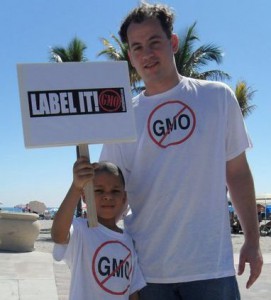
The Non-GMO Project, the non-profit organization and leading certification group in the United States, who’s efforts are in favor of protecting the non-GMO food supply and providing consumers information to make informed choices, explains GMOs:
“GMOs (or “genetically modified organisms”) are living organisms whose genetic material has been artificially manipulated in a laboratory through genetic engineering, or GE. This relatively new science creates unstable combinations of plant, animal, bacteria and viral genes that do not occur in nature or through traditional crossbreeding methods.
Virtually all commercial GMOs are engineered to withstand direct application of herbicide and/or to produce an insecticide. Despite biotech industry promises, none of the GMO traits currently on the market offer increased yield, drought tolerance, enhanced nutrition, or any other consumer benefit.
Meanwhile, a growing body of evidence connects GMOs with health problems, environmental damage and violation of farmers’ and consumer’ rights.”
Lab Created Foods? I Didn’t Sign Up For an Experiment!
Sounds like some kind of science experiment to me. Seems to me the cause against GMOs makes sense, I’m not picturing any of us signed up to be guinea pigs for lab created food to be sold in our grocery stores and fed to our families…I know I sure didn’t.
There are people who debate that GMOs aren’t actually harmful and serve a great purpose for the longevity of mass food supply. If you ask me, the current and potential harm far outweighs the possible benefits.
Let’s break this down…
Exactly what levels of herbicides are being used to try and make these new species produce higher yields, drought tolerance, etc, etc, yadda, yadda…and super-amped levels of pesticides would be safe and non-toxic inside the body why? Then, to add icing to the cake (GMO and chemical laden of course) whether the extra boosts of pesticides are even producing higher crop yields is of considerable debate (it’s also attributed to improvements in conventional agriculture), drought tolerance, etc, has all been pretty much ruined by the increased use of toxic pesticides and the invasion of more-resistant-than-ever-weeds!
In my humble opinion, it certainly doesn’t take a rocket scientist to figure out GMOs aren’t looking like such a great thing. It does, however take one to create them in a lab.
It Gets Even More Weird
Let’s break it down, just a bit more…
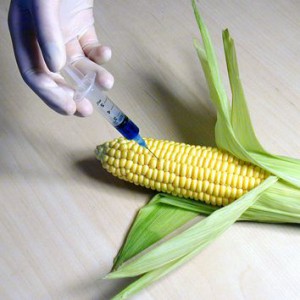
Here’s where things get really weird. For example, did you know antifreeze genes from the winter flounder have been added to tomatoes to make them frost resistant in freezing temperatures? Yep, a tomato with fish genes. Is it just me, or is it really weird that our food source is being manipulated in the name of less bruising and slower browning of fruits and vegetables? Isn’t that what they do? Isn’t that natures indicator to eat them during peak ripeness? If we lose nutrients by letting these foods go rotten before we enjoy them, maybe it’ll remind us to eat them fresh the next time.
And as recently as the end of 2015 the FDA approved the first genetically modified animal for food consumption, Atlantic salmon that grow twice as fast as naturally, using genes from salmon and an eel-like fish, which forces them to produce growth hormones year round, instead of their usual summer only months. Does anyone else find this really oddly WEIRD?
The kicker is that the FDA findings showed the salmon to be higher in fat, but not the beneficial Omega fats natural grown salmon has, and lower in protein…hmm, where are the extra nutritional benefits touted in genetically modified foods? For more on the topic, see this article here.
So, unless you are eating wild-caught salmon, you won’t know whether it’s been genetically tinkered with. And as of now, the labeling on this fish is set to be voluntary. Whether you care or not is up to you, but the point is that clear GMO labeling will allow those that do to make an informed decision on whether they choose to buy that particular salmon, or a non-GMO salmon. As consumers, we have a right to know if anything unnatural is being done to our food.
What About Our Farmers and The Environment?
Crops engineered to tolerate more and more herbicides brought with it a double-edged sword – “super weeds” and “super bugs” – and the use of more toxic herbicides and pesticides to counteract them. As of 2013, Farm Industry News reports that more than 61 million acres of U.S. farmland is infested with these weeds which farmers are no longer able to get rid of with the usual’s like Roundup, instead being forced to resort to much more toxic herbicides used in Agent Orange, and known to cause reproductive problems, birth defects, and increased risks of cancer.

And then there’s cross-contamination. The planting of genetically modified crops (which are developed and patented by the world’s biggest chemical companies) are increasing at an alarming rate and as the GMO seeds of these crops reproduce in large numbers, they or the pollen of the plants spread through the environment by wind, water, insects and machinery. They land somewhere, right? This has become a major issue for organic growers, who choose to avoid the use of GMOs. Huge for two reasons:
1. This ruins the livelihood for farmers using practices that are safest and most sustainable for us and the environment. Fifteen years ago it was already estimated that organic corn farmers’ annual lost income was around $90 million.
2. This poses a serious threat to farmers rights and security, and the entire national food security. The same biotech companies that make the very GMOs that are cross-contaminating have the power to sue farmers who have been contaminated with GMOs from neighboring crops.
And what about monarch butterflies whose population is now a mere 20 percent of what it was before the mid 1990s? Studies are saying these beautiful creatures may go extinct within the next two decades due in part to the massive use of the toxic weed killer glyphosate (the main ingredient in Roundup), widely sprayed on GMO crops and killing off the milkweed plants where monarchs lay their eggs.

Speaking of Roundup, the massive increase in glyphosate use by U.S. farmers, and last years determination of it as a “probable human carcinogen” by the World Health Organization have spurred the EPA’s Office of Inspector General to open an investigation into Monsanto GMOs and superweeds, and the effects on human health and the environment.
GMOs are a product of chemical agriculture and big business for the world’s largest chemical companies, it’s no accident that Monsanto, who sells Roundup-ready seeds, also sells Roundup. The detrimental effects on the environment are already being seen, and the long-term impacts remain to be seen, but one thing is for sure, once these organisms have been released into the environment, their effects cannot be reversed.
How to Avoid GMOs When You Shop
Since it’s estimated that more than 75 percent of food in grocery stores is genetically modified or contains GMO ingredients, avoiding foods with GMOs can be tricky business. So here are a few pointers on what to look for, options, and resources so you’re better equipped to make informed decisions about what makes it on to yours and your families plates. It’s also empowering to be aware that every time you eat, you’re voting with your fork – believe your choices do make a difference.
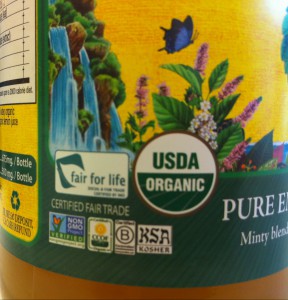
1. Look For the USDA Organic/Certified Organic Seal. By far the easiest way to avoid GMOs, is to stock your kitchen with these foods since USDA regulations prohibit the use of genetically modified ingredients, plus you get the benefit of pesticide-free food too.
2. Choose certified “Non-GMO Project Verified”. This seal ensures that all major ingredients that could potentially be at risk of being genetically modified, are tested before use in a verified product, including conventional foods. For a complete list of verified products visit the Non-GMO Project website.
3. Use EWG’s tools as a resource. EWG’s Food Scores allows you to search their database by category to find out which foods are GMO free. You can also access EWG’s Shopper’s Guide to Avoiding GMOs.
In addition to these tips, it’s important to be aware of some of the most common GMOs and ingredients so that we know when it’s really important to choose non-GMO versions when available, or different foods. Of course, many of these can be avoided all together if we stick to eating real food instead of processed, which allows our bodies to thrive the way they’re meant to anyway.
- Corn and ingredients derived from corn like high fructose corn syrup, corn starch, corn flour, corn meal, corn oil, and masa.
- Soybeans and ingredients derived from soybeans like soy milk, tofu, soy proteins, soybean oil, soy flour, soy lecithin, and soy sauce.
- Vegetable oils including vegetable, canola, cottonseed and of course, corn and soybean oil.
- Sugar from sugar beets which makes up about 55 percent of sugar produced in the U.S.
- Alfalfa which is used in livestock feed and in greens supplements.
- Papaya
- Zucchini and yellow summer squash
There are many more common processed foods GMOs may be hidden in, far too many to list.
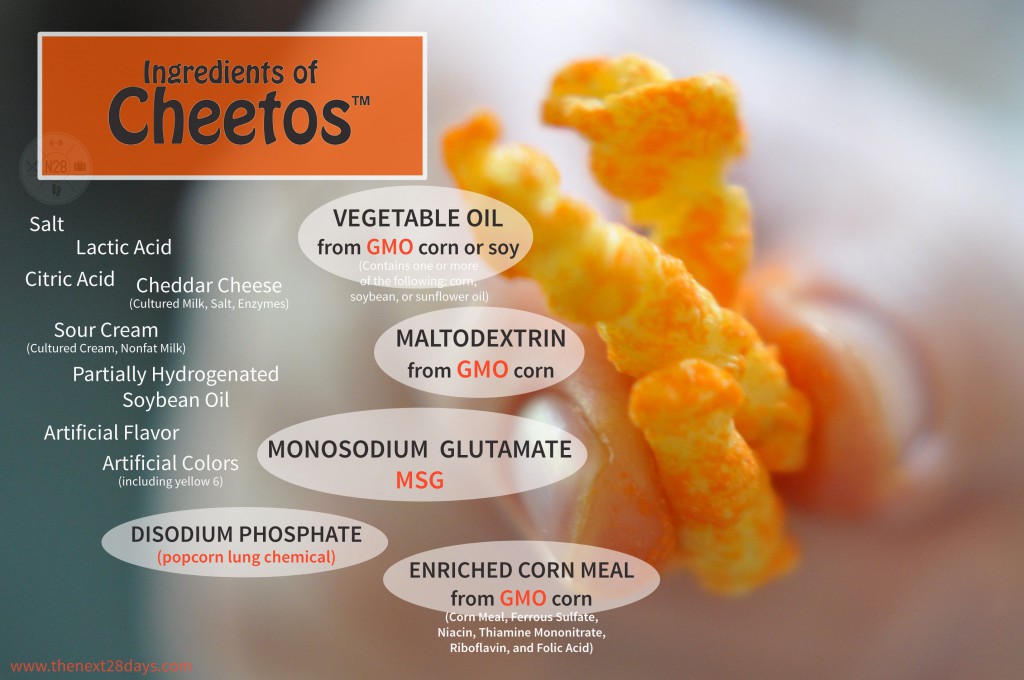
Stay Tuned – Coming Soon to a Grocery Store Near You
There are a number of genetically modified foods that have either already been approved, or are being considered for approval by the FDA to hit grocery store shelves, including plums, tomatoes, potatoes, radicchio, wheat, flax and remember that super salmon I mentioned earlier? Yep, that too.
Until Next Time
While the recent positive strides toward more transparency regarding GMO labeling are steps in the right direction, now that the door is open, the question remains as to how exactly Congress will go about a national mandate that suffices both the American consumer and the food industry. And, of course, there is still a whole lot of work to be done in the way of voluntary GMO labeling, and it remains to be seen as to how this will all play out.
In the meantime, which companies do you think will be next to get on the bandwagon and provide clear GMO labeling, where consumers should be able to see it – directly on the package?
Have you found ways to vote against GMOs with your food choices? Share your thoughts and suggestions in the section below!

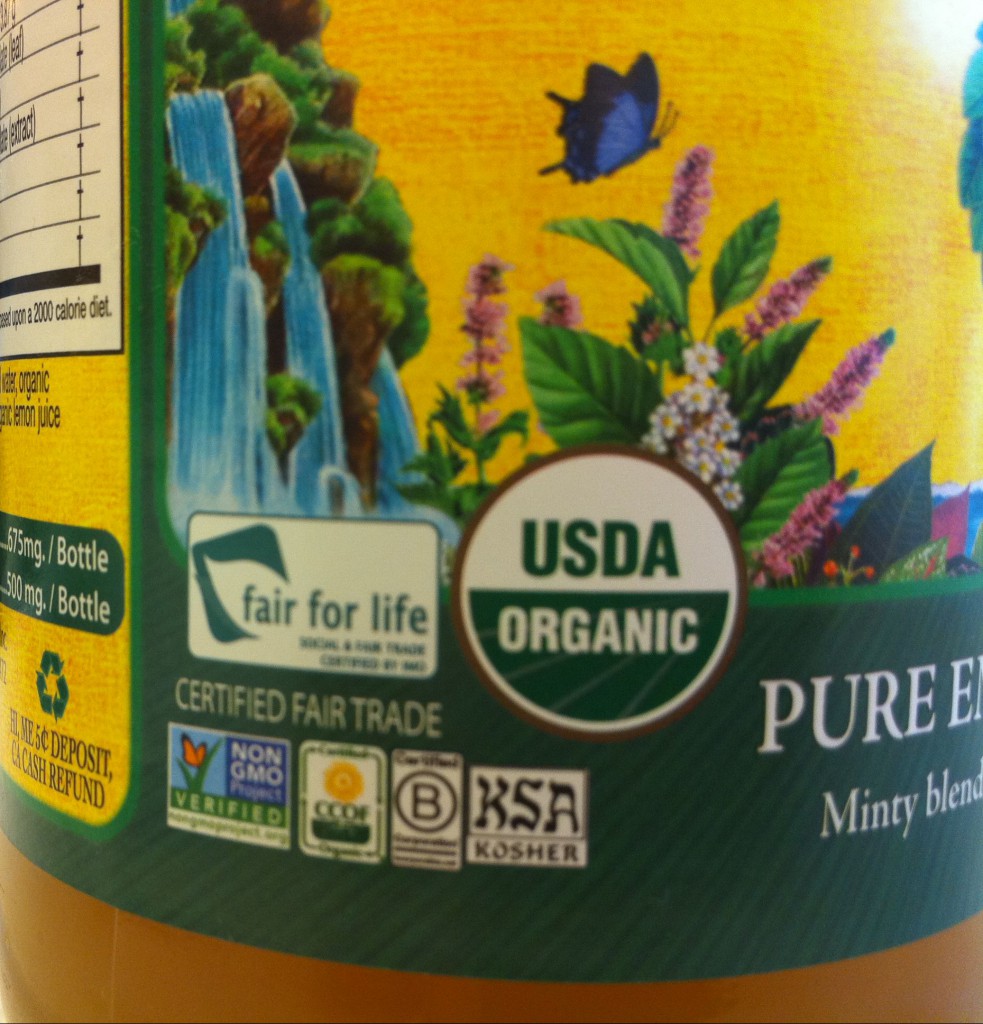
Thank you for the reminders and additional information to help in purchasing non GMO products. Thanks for the encouragement and the focus on the positive throughout your website!
Certainly Cheryl! I’m so happy you found the information helpful and sincerely hope it gives you confidence when it comes to knowing how to seek out non-GMO foods. Thanks for reading and stop by anytime :)
I am so glad to hear about the labeling. There might need to be a label on 75% of items in the grocery! No more hiding.
I know, right! You make a good point, it will be quite an undertaking for major food corps, and costly, I’m sure, but hey – at least the hundreds of millions of dollars they’ve been spending to fight this will now go towards fixing a problem they could have avoided by just being transparent in the first place. So much money that could’ve been put towards such better use :( Thanks for getting involved in the discussion Emma :)